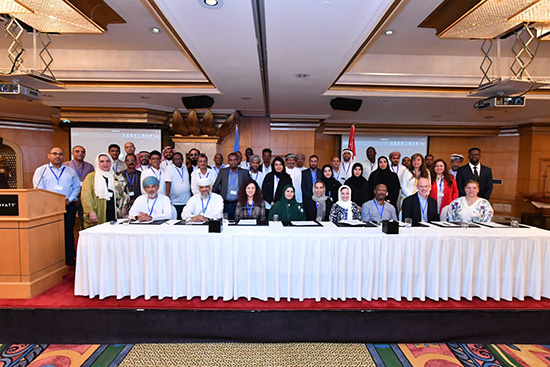
10 August 2023 – Vector-borne diseases such as malaria and dengue contribute to significant morbidity and mortality in WHO’s Eastern Mediterranean Region. The current spread of invasive vectors; Anopheles stephensi, Aedes aegypti and Aedes albopictus, in the Region are an additional challenge that is increasing the risk of outbreaks of malaria and dengue in high-risk countries.
Prevention and control of dengue depends on vector control of Aedes mosquitoes, namely Aedes aegypti, the primary vector that transmits dengue virus and other Aedes-borne diseases. Vector control of Anopheles mosquitoes that transmit malaria is an essential preventive intervention for reducing the malaria burden in endemic countries and preventing re-establishment in malaria-free countries. For effective vector control of these diseases, entomological surveillance is an important activity that allows decisions on the type and timing of vector control. An essential part of this surveillance is the identification of mosquito species, as vector control should target the mosquito species that are transmitting disease. While molecular methods for identification of species are improving, morphological identification with a microscope remains the main method for identification of mosquitoes.
Accurate identification of mosquito vectors is essential to determine the composition of the mosquito fauna, the species that feed most frequently on humans and those which contribute to the transmission of pathogens in an endemic area, both spatially and temporally. Correct identification of vectors is the first step in processing field samples during vector surveillance to provide evidence-based implementation of selective and timely effective vector control interventions. Capacity-building will support national vector control programmes to conduct regular vector surveillance for rapid and appropriate vector control response.
To strengthen country capacity in identifying Aedes and Anopheles mosquitos, the WHO Regional Office for the Eastern Mediterranean organized a training of trainers workshop on morphological identification of primary malaria and dengue vectors from 16 to 20 July 2023, in Muscat, Oman, with the support of the United States Centers for Disease Control and Prevention, the WHO global malaria and neglected tropical disease programmes and the Ministry of Health in Oman.
The objectives of the workshop were to:
illustrate the mosquito fauna with focus on Anopheles species and Aedes species in the Region;
apply identification keys to identify primary Anopheles malaria and dengue vectors;
distinguish morphologically the major Anopheles malaria vectors;
distinguish morphologically Aedes vectors, Aedes aegypti and Aedes albopictus in the Region;
prepare mosquitoes as voucher specimens for reference;
process mosquito specimens in laboratories for further molecular confirmation;
prepare a plan for similar workshops for national and subnational training activities.
The workshop was attended by participants from Eastern Mediterranean and African regions; Afghanistan, Bahrain, Egypt, Eritrea, Oman, Saudi Arabia, Somalia, South Sudan, Sudan and Yemen.
The pre- and post-tests for evaluation of trainees comprised multiple-choice questions, images and identification of mosquito specimens placed under microscopes. Analysis of the pre- and post-tests showed a 30% increase in the number of participants who obtained a score of 80% or above: from 21 to 30 out of 30 participants.
For the evaluation of the workshop, the SLIDO platform (slido.com) was used with 3 rating questions and 2 open-ended questions. Participants reported 71% satisfaction with their learning experience during the workshop, in addition 86% and 88% satisfaction with the workshop in general and the workshop organization, respectively.
The workshop achieved its objectives with the 30 participants from 10 high-risk countries of WHO’s Eastern Mediterranean and African regions acquiring the knowledge and skills as potential trainers to plan for implementation of a similar training to strengthen vector surveillance and control in their respective countries.





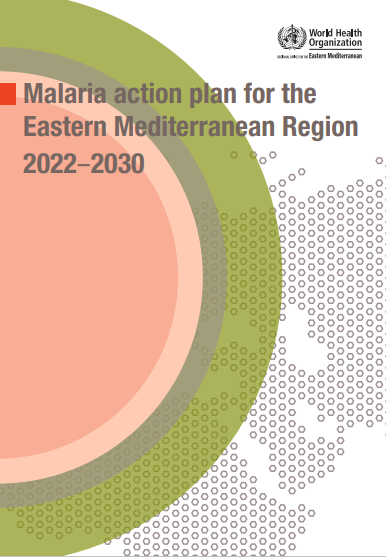
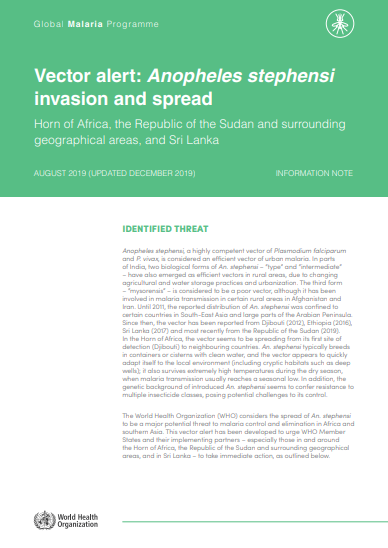
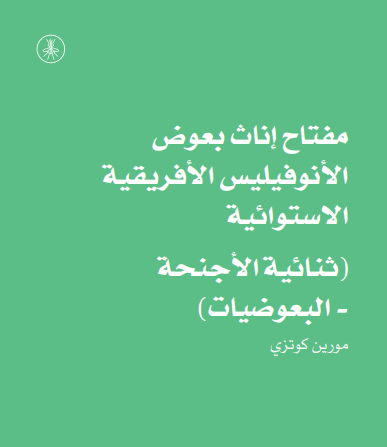
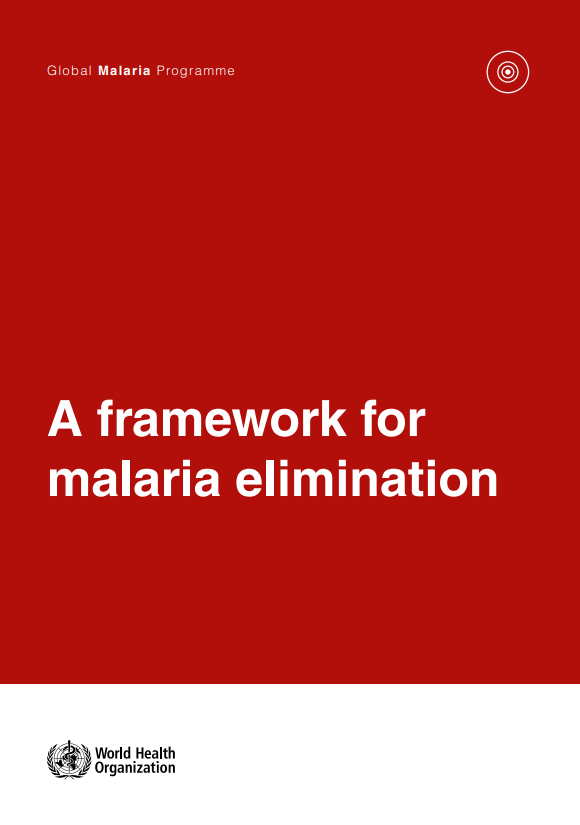


 World Malaria Report 2017
World Malaria Report 2017